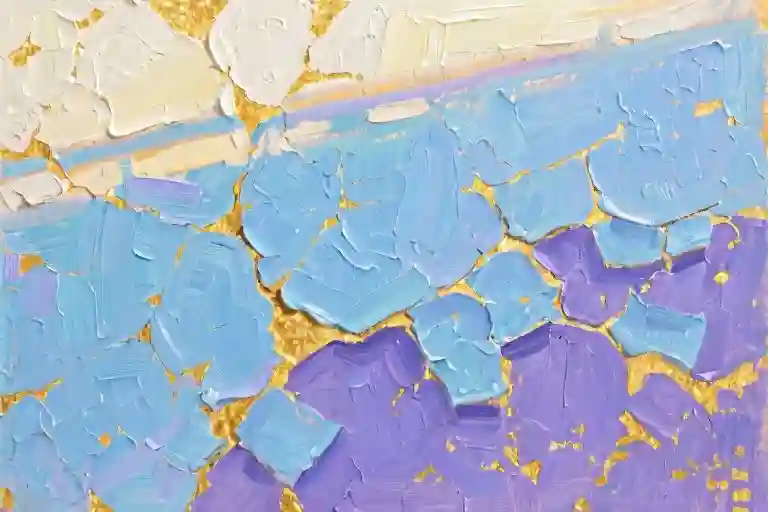Welcome back to Autistic Advice, where we navigate the messy, beautiful journey of neurodivergent living together. Today’s question comes from someone who’s done the hard work of self-acceptance, yet keeps discovering new layers of shame beneath the surface – like peeling an onion only to find it’s actually a Russian nesting doll of self-doubt.
“Any tips for what to do when unpacking shame seems to just keep bringing up new layers? (I have a tendency to ruminate and a talent for inventing new reasons to feel bad!)” – Anonymous
That description of shame piling up like layers of cheap paint in a rundown apartment? It landed with such precision because so many of us know that particular flavor of exhaustion. The kind where society hands you a scraper and says “fix yourself,” while simultaneously slapping on fresh coats of expectations before the last layer even dries. You’re told to unmask, to embrace your authentic neurodivergent self, yet every revelation seems to uncover new reasons to feel wrong.
Here’s what I’ve learned from both professional practice and personal experience: shame grows in the gap between who we’re expected to be and who we actually are. For neurodivergent folks, that gap isn’t just personal – it’s systemic. The same brain that spots patterns others miss will inevitably notice all the ways we don’t measure up to neuronormative standards. Our exceptional attention to detail becomes a curse when turned inward, cataloging every social misstep, every sensory overload moment, every time we needed accommodation but didn’t ask.
What makes this particularly vicious is how shame evolves. Early layers might be about specific incidents (“I stimmed during the meeting”), but deeper layers become existential (“I’m fundamentally broken”). That’s not you failing at self-acceptance – that’s internalized ableism doing its insidious work. The fact that you’re aware of these layers means you’re already doing the courageous work of examination most people avoid.
Before we dive into strategies, let’s acknowledge something crucial: this process will feel messy because it is messy. There’s no linear path through decades of accumulated shame. Some days you’ll peel back a layer and find relief; other days you’ll hit raw nerves. Both mean you’re making progress. The goal isn’t to eliminate shame completely (an impossible standard that would just become another source of shame), but to develop what psychologist Kristin Neff calls “a witnessing relationship” to it – the ability to notice shame without drowning in it.
The Roots of Shame: When Society and Self-Criticism Collapse
That feeling when you finally peel back one layer of shame, only to find three more waiting underneath? It’s like trying to clean an old apartment where every wipe reveals another stain the landlord painted over. The more you scrub, the more the walls seem to crumble. For neurodivergent folks, this experience isn’t just metaphorical – it’s the exhausting reality of existing in a world that demands conformity while offering no structural support.
Social expectations function like invisible rulebooks we’re supposed to instinctively understand. Eye contact during conversations. The precise timing for laughter. The unspoken hierarchy in workplace small talk. When these norms don’t come naturally to autistic individuals, the constant corrections – “Look at me when I’m talking to you,” “Why are you so awkward?” – become layers of shame that accumulate over years. Each interaction carries the implicit message: your natural way of being is wrong.
What makes this particularly insidious is how internalized these messages become. Many neurodivergent people develop what I call the “invention factory” – a mental workshop constantly manufacturing new reasons to feel inadequate. Missed a social cue yesterday? Shame. Needed to stim to self-regulate? Shame about the stimming, then shame about feeling ashamed. It’s a recursive loop where the brain treats every past interaction as evidence of personal failure rather than systemic incompatibility.
This internalized ableism often stems from early experiences. Children whose sensory needs were dismissed as “overreacting,” teens forced into painful social situations “for their own good,” adults masking exhaustion to keep jobs – these aren’t individual failures but collective ones. Yet the weight lands squarely on neurodivergent shoulders. The cruel irony? The very traits that attract shame – intense focus, sensory sensitivity, unconventional communication styles – are often strengths when allowed to flourish in accommodating environments.
The psychological mechanism behind this shame layering resembles what we call cognitive fusion in therapy – when thoughts become so sticky we mistake them for reality. A neurotypical person might think “That interaction was awkward” and move on. For autistic individuals, that thought often morphs into “I am awkward” then “Everyone notices how awkward I am” until it becomes an inescapable truth. The brain, trying to protect us from future pain, becomes overzealous in flagging potential social risks, creating what feels like an endless shame excavation project.
Breaking this cycle starts with recognizing that shame isn’t proof of your inadequacy, but evidence of systems not built for you. Those layers didn’t form in isolation – they’re the residue of thousands of subtle corrections, confused looks, and well-meaning but harmful “you should” statements. This realization doesn’t immediately dissolve shame, but it creates crucial distance between “things I’ve been taught to feel bad about” and “who I actually am.”
The Psychology Behind Persistent Shame
That feeling when you peel back one layer of shame only to find three more waiting underneath? It’s like opening a Russian nesting doll of self-doubt where each layer seems more intricately painted than the last. Many neurodivergent folks develop this uncanny ability to find new reasons to feel inadequate – what our anonymous questioner perfectly described as ‘a talent for inventing new reasons to feel bad.’
This phenomenon has roots in two psychological processes that often work in tandem: cognitive fusion and internalized oppression. Cognitive fusion occurs when we become so entangled with our thoughts that we mistake them for absolute truths. That voice saying ‘you’re awkward’ stops being just a passing thought and becomes something we believe defines our entire being. For neurodivergent individuals, years of receiving subtle (and not-so-subtle) messages about how we ‘should’ behave creates a perfect storm for this mental blending.
Internalized oppression takes this a step further. When society constantly signals that your natural ways of moving through the world are wrong – whether it’s avoiding eye contact, needing more processing time, or stimming to self-regulate – these judgments get baked into our self-concept. We essentially become our own strictest enforcers of norms that never accommodated us in the first place. The cruel irony? The more we try to comply with neurotypical expectations through masking, the more we accumulate these layers of shame about our ‘failures’ to perform neurotypicality convincingly enough.
What makes this particularly sticky for neurodivergent minds is how our cognitive styles interact with shame. Many of us have brains that excel at pattern recognition and deep analysis – wonderful traits that unfortunately also equip us to construct elaborate shame narratives. A single awkward interaction might get dissected from twelve angles, each revealing some new flaw we’d previously missed. We don’t just feel bad about what happened; we feel bad about our capacity to feel bad about it, then ashamed of how much time we’ve spent analyzing the shame. The layers multiply exponentially.
Breaking this cycle starts with recognizing that these shame layers aren’t organic growths – they’re more like emotional scar tissue formed in response to living in a world not designed for our neurology. The next time you find yourself ‘inventing’ new reasons to feel inadequate, try this reframe: you’re not uncovering hidden truths about yourself, you’re encountering the psychological equivalent of repetitive stress injuries from navigating systems that demand constant adaptation from you while offering little accommodation in return.
This understanding doesn’t immediately dissolve the shame, but it can create crucial mental distance. When shame arises, practice labeling it (‘Ah, this is the “I should have masked better” shame layer’) rather than engaging with its content. Over time, this helps rewire the automatic thought patterns that keep us trapped in shame spirals. The goal isn’t to eliminate all shame instantly (an impossible standard that would just create more shame), but to gradually loosen its grip by seeing it for what it is – a learned response, not an inherent truth.
Peeling Back the Layers: Three Tools to Disarm Shame
The landlord’s paint analogy sticks with me because it captures how shame operates – not as a single coat we can scrub away, but as decades of accumulated layers sealing us beneath their weight. What makes neurodivergent shame particularly stubborn isn’t just its thickness, but how we’ve been handed the brush and told to keep painting over cracks that weren’t ours to fix. These tools aren’t about perfect eradication (that landlord mentality again), but creating breathing room between you and those calcified layers.
Tool 1: The Observer Stance
When you notice yourself inventing new reasons to feel bad – that “talent” our anonymous reader described – try this:
- Pause and name the shame script aloud: “This is the story about how I should’ve made eye contact during lunch.”
- Add this framing: “I’m noticing I’m having the thought that…” (e.g., “…I failed socially because I looked at the sandwich instead of my coworker”).
- Visualize the thought as a subway announcement – impersonal, automated, not truth but background noise.
This cognitive defusion exercise works because it exploits how autistic minds often process language literally. By creating syntactic distance between yourself and the shame narrative (“having the thought” vs. “this is true”), you disrupt the neural pathways that treat self-criticism as factual reporting.
Tool 2: Affirmations That Don’t Lie
Generic positivity (“You’re perfect as you are!”) often backfires for neurodivergent folks because our brains spot the falsehood. Instead, build a rotating list of specific truths:
- “My sensory sensitivities aren’t failings – they’re specialized equipment.”
- “When I need to stim during meetings, I’m regulating my nervous system, not being disruptive.”
- “That social interaction felt awkward, and I still showed up.”
Keep these on your phone or write them on sticky notes in sensory-friendly colors. The key is pairing them with physical grounding – say one aloud while tracing your finger along your forearm, noticing texture contrasts (seams on clothing, goosebumps, etc.). This somatic anchoring prevents affirmations from becoming empty mantras.
Tool 3: The Shame Map
Create a simple log with three columns:
| Date/Time | Shame Trigger (What happened?) | Hidden Rule (What “should” did I violate?) |
|---|---|---|
| Tues 3pm | Didn’t laugh at boss’s joke | “Must perform neurotypical humor cues” |
Review weekly to identify:
- Recurring “shoulds” (likely internalized ableism)
- Context patterns (shame spikes more in mornings? Around certain people?)
Unlike rumination, this structured observation creates psychological space. Over time, you’ll spot the difference between feeling shame and being shameful – those layers start separating like old paint letting go of drywall.
The weight of shame never truly leaves us in one clean sweep. It peels away in layers, like old wallpaper revealing decades of patterns beneath—each one a reminder of how we were told to be smaller, quieter, less ourselves. What society labels as your ‘flaws’ are actually its failures to accommodate neurodivergent minds. That persistent voice whispering you’re too much or not enough? It’s an echo of systems designed to measure everyone with the same broken ruler.
For those wondering where to direct their frustration: aim outward. The exhaustion you feel from constantly unmasking isn’t personal weakness—it’s the tax levied on marginalized minds forced to navigate neuronormative expectations. When shame resurfaces during self-work (and it will), try this reframe: This isn’t my residue; this is their residue on me. The distinction matters.
Three anchors for days when the layers feel endless:
- Name the machinery
When shame arises, identify its origin aloud: This is workplace conformity shame from 2018 or This is childhood stim-suppression shame. Externalizing separates you from the feeling—like noting a faulty app draining your phone battery rather than blaming the device itself. - Build neurodivergent-friendly pride
Counterintuitively, leaning into ‘awkward’ traits builds resilience. If eye contact feels violent, practice saying I listen better when looking elsewhere. Each small affirmation rewires the neural pathways shame carved. - Track the triggers, not the thoughts
Instead of spiraling about why you feel shame, log the circumstances: Tuesday 3PM—shame spiked after coworker mocked my fidgeting. Patterns emerge. Maybe it’s certain environments or people, not your neurology, that need changing.
Resources that sustain this work:
- Unmasking Autism by Devon Price (yes, that’s me—this book exists because I needed it too)
- The #ActuallyAutistic hashtag for community wisdom
- Your unanswered questions in my inbox, because some layers are too heavy to peel alone.
Shame dissolves fastest in the oxygen of shared stories. However you choose to reach out—through books, screens, or whispered words—you’re already proving that survival isn’t about enduring the layers, but discovering what thrives beneath them.





